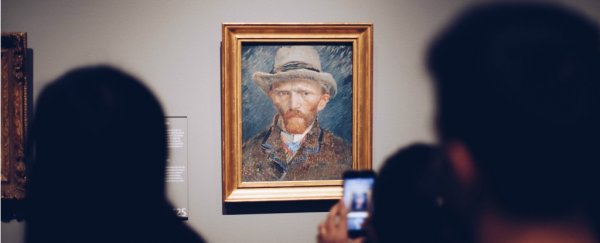An unconventional new initiative in Canada will soon allow doctors to literally prescribe art to their patients - by giving them free access to a local museum.
Wandering through the Montreal Museum of Fine Arts (MMFA), these patients and their loved ones will be able to feast their eyes on the soothing properties of art.
The initiative is the first of its kind in the world. And while you certainly can't replace a conventional treatment with a couple of paintings, the idea is for such 'prescriptions' to assist a person's current treatment plan.
Under the new program, members of the Francophone Association of Doctors in Canada (MFdC) will be able to hand out up to 50 prescriptions for their patients.
These prescriptions will be available for those with a wide range of mental and physical illnesses, and each one of the passes will allow two adults and two minors to visit the museum for free.
"By offering free admission to a safe, welcoming place, a relaxing, revitalizing experience, a moment of respite, and an opportunity to strengthen ties with loved ones, MMFA-MFdC Museum Prescriptions contribute to the patient's well-being and recovery," explains a press release from the MMFA.
It may look a lot like a marketing effort for the museum (and it's possible there's an element of promotion in this) but there's also increasing evidence that the display of visual art, especially if it's depicting nature, can have positive effects on health outcomes.
In some ways, the benefits of looking at art appear a little similar to physical activity. A systematic review of clinical art therapy found that visual art has significant and positive effects on depression, anxiety, mood, trauma, distress, coping ability, and self-esteem.
Findings like these are slowly gaining traction in the medical community, making artwork a higher priority in hospitals around the world.
In the US, nearly half of all health care institutions have reported including art in health care programming, such as art therapy and the placement of visual art in hospitals.
With spaces dedicated to art therapy and also a medical consultation room, the MMFA already provides services for people with mental health issues, eating disorders, autism spectrum disorder, epilepsy and Alzheimer's disease, just to name a few.
So far over 100 doctors from MFdC have signed up to the pilot program.
Nicole Parent, head of the MFdC, said these numbers just go to show that even physicians have "a sensitivity and openness to alternative approaches."
These art prescriptions aren't the only unconventional treatment in the world, either. In Scotland's Shetland Islands, a pilot programme for prescribing 'nature' to patients went so well, it's now a scheme available to all doctors in the region.
Encouraging people to get out there and appreciate some clouds is expected to improve patients' blood pressure, reduce their risk of heart disease, and give their mental health a boost.
It's not quite the same as art therapy, but it's a nice idea - both of these types of unusual 'prescriptions' can play a role in one's overall wellbeing. (We'll keep our fingers crossed for some 'chocolate' prescriptions next.)
